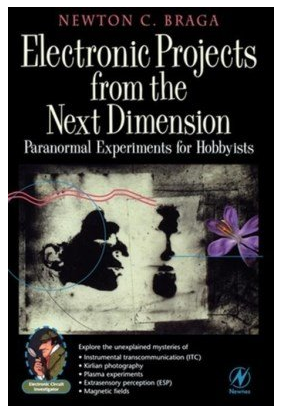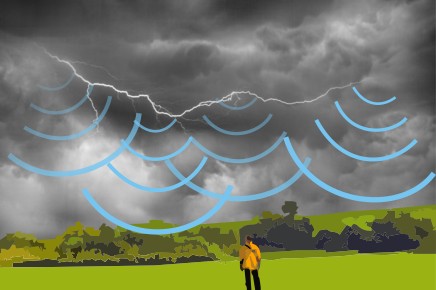As I explain on page 106 of my book, the word Brontophonic derives from the Greek word "brontos" meaning "thunder" which leads us to designate a brontophonic as something that sounds like a thunder.
We can give as an example of the use of the word at the present time the name "brontosaurus" which would mean "thunder lizard" to designate the terrible prehistoric reptile.

With the recent news that some kind of different equipment was used in the sonic attack at the US embassy in Cuba, our publication focusing on the Brontophonic sound came into our minds.(see note)
In fact, the penetrating sound of (low-frequency) thunder sometimes creates the sensation that it comes from inside our head. So, at the time we created a project based on this fact, using a new concept of sound, where the sound sensation is produced inside our brain.
In the following article we will show how to design a circuit which exploits this fact in a very interesting way (ART401E).
The Sound of Thunder
The sound of thunder is produced when an electric discharge ionizes the air by instantly heating it to a temperature high enough to produce light and heat and thereby the expansion of air.
This expansion creates a strong sound wave, an "explosion" which propagates through space in the form of sound.
The multiple reflections and the fact that the wave is produced along the radius and not at a single point causes the resounding noise which, with countless reflections and reverberations, continues.

The sound, with a very high power, much energy concentrated in a small time interval has its major component in the domain of the low frequencies.
Thus, larger objects such as windows, metal structures tend to vibrate when they receive the sound wave of thunder.
However, in the case of glazing, we observe the occurrence of an interesting phenomenon. The resonance frequency of some windows is greater than that of the thunder itself, a harmonic, for example with double, triple or quadruple frequency.
Thus, when the glazing receives the sound wave of a thunder it vibrates, not at the frequency of the sound wave, but at a multiple frequency re-emitting the energy received.
We then see the glass vibrate producing a sound, which is not the original of a thunder, but a retransmission with a higher frequency. This is the bronchophonic sound also called acoustic beat.
A multi-frequency sound produced by a lower frequency sound which is sometimes not perceived, giving the impression that the object vibrates by itself. The brontophonic name comes precisely because it manifests itself more frequently with the thunder.
If the phenomenon manifests inside our ear by a beating effect (see the following article), we have the reissue of the higher frequency sound within our ear, giving the impression that it is produced inside our head.
This is a very interesting effect that can be used in interesting applications which we can hardly imagine.



